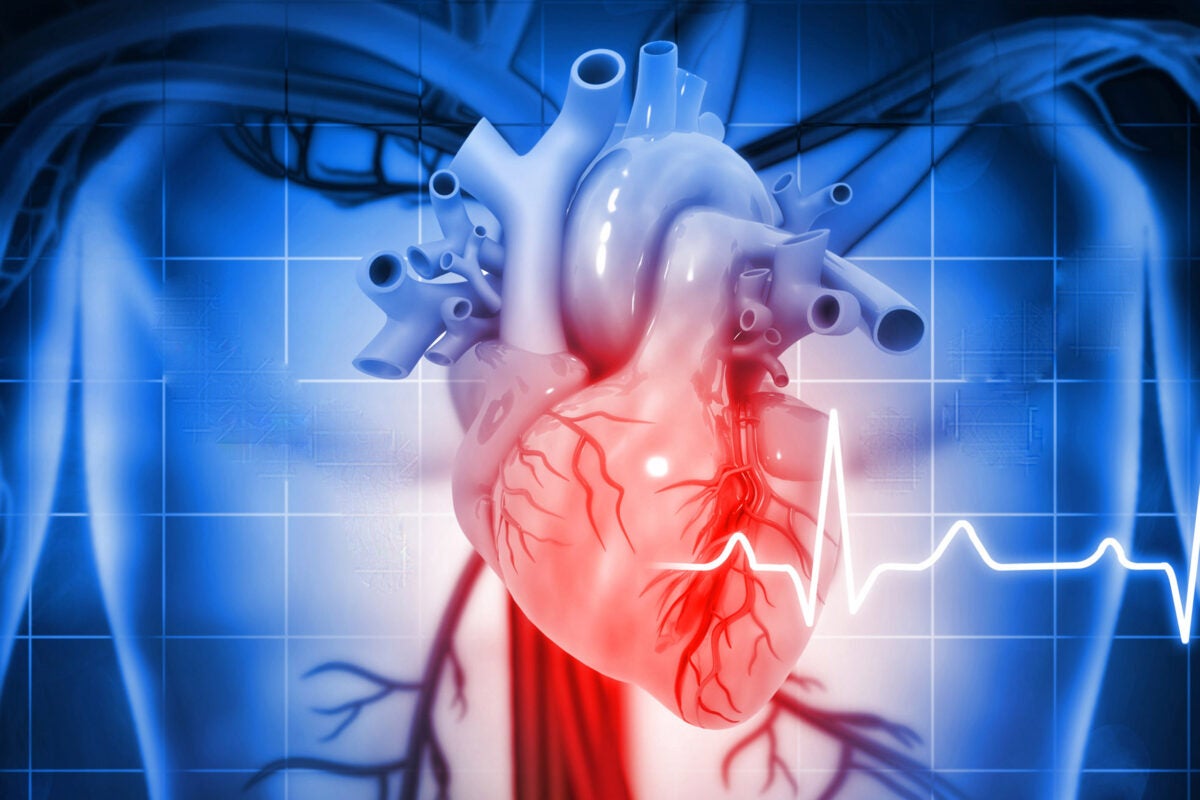Health
Forecasting the next variant
Professor Eugene Shakhnovich (from left), Dianzhuo (John) Wang, and Vaibhav Mohanty worked together on the studies.
Veasey Conway/Harvard Staff Photographer
Harvard team fuses biophysics and AI to predict viral threats
When the first reports of a new COVID-19 variant emerge, scientists worldwide scramble to answer a critical question: Will this new strain be more contagious or more severe than its predecessors? By the time answers arrive, it’s frequently too late to inform immediate public policy decisions or adjust vaccine strategies, costing public health officials valuable time, effort, and resources.
In a pair of recent publications in Proceedings of the National Academy of Sciences (PNAS), a research team in the Department of Chemistry and Chemical Biology combined biophysics with artificial intelligence to identify high-risk viral variants in record time — offering a transformative approach for handling pandemics. Their goal: to get ahead of a virus by forecasting its evolutionary leaps before it threatens public health.
“As a society, we are often very unprepared for the emergence of new viruses and pandemics, so our lab has been working on ways to be more proactive,” said senior author Eugene Shakhnovich, Roy G. Gordon Professor of Chemistry. “We used fundamental principles of physics and chemistry to develop a multiscale model to predict the course of evolution of a particular variant and to predict which variants will become dominant in populations.”
The studies detail approaches for forecasting the viral variants most likely to become public health risks and for accelerating experimental validation. Together, these advances reshape both the prediction and detection of dangerous viral variants, setting a template for broader applications.
These studies were led by members of Shakhnovich’s lab, including co-authors Dianzhuo (John) Wang and Vaibhav Mohanty, both Ph.D. students in the Harvard Kenneth C. Griffin Graduate School of Arts and Sciences, and Marian Huot, a visiting student from École Normale Supérieure.
“This framework doesn’t just help us track variants — it helps us get ahead of them.”
Marian Huot, visiting student and co-author
“Our work has focused on the spike protein of COVID-19, analyzing how its mutations change viral fitness and immune evasion,” said Wang. “Given that COVID-19 is the most extensively documented pandemic to date, we saw an opportunity to develop models that not only understand viral evolution, but also anticipate which mutations are likely to pose the greatest threat.”
The first study introduced a model that quantitatively linked biophysical features — such as the spike protein’s binding affinity to human receptors and its ability to evade antibodies — to a variant’s likelihood of surging in global populations. By incorporating a complex, yet essential factor called epistasis (where the effect of one mutation hinges on another), the model overcame a key limitation of previous approaches that struggle to make accurate predictions.
“Evolution isn’t linear — mutations interact, sometimes unlocking new pathways for adaptation,” Shakhnovich said. “Factoring these relationships allowed us to forecast the emergence of dominant variants ahead of epidemiological signals.”
Building on these insights, the companion study introduces VIRAL (Viral Identification via Rapid Active Learning), a computational framework that combines the biophysical model with artificial intelligence to accelerate the detection of high-risk SARS-CoV-2 variants. By analyzing potential spike protein mutations, it identified those likeliest to enhance transmissibility and immune escape.
“At the start of a pandemic, when experimental resources are scarce, we can’t afford to test every possible mutation,” Wang said. “VIRAL uses artificial intelligence to focus lab efforts on the most concerning candidates — dramatically accelerating our ability to identify the variants that could drive the next wave.”
The implications of this research are far-reaching. Simulations show that the VIRAL framework can identify high-risk SARS-CoV-2 variants up to five times faster than conventional approaches, while requiring less than 1 percent of experimental screening effort. This dramatic gain in efficiency could significantly accelerate early outbreak response.
“This framework doesn’t just help us track variants — it helps us get ahead of them,” said Huot. “By identifying high-fitness variants before they appear in the population, we can inform vaccine design strategies that anticipate, not just react to, emerging threats.”
A defining feature of this work is its interdisciplinary scope, with the international Harvard team bringing together fields of molecular biophysics, artificial intelligence, and virology to deepen our understanding of rapidly evolving viral threats.
“By uniting physics-driven modeling and machine learning, we’re introducing a predictive framework for viral evolution with broad potential,” Shakhnovich said. “We’re eager to see how this strategy might extend beyond infectious diseases into areas like cancer biology.”
Looking ahead, the team aims to adapt and scale the framework for broader use, targeting challenges such as other emerging viruses and rapidly evolving tumor cells. They emphasize that combining physical modeling with AI could shift the paradigm from reactive tracking to proactive biological forecasting.
“In a world where biological threats are constantly evolving, earlier warning and smarter tools are essential,” Wang said. “Our ultimate goal is to create a platform — one that gives scientists and policymakers a head start not just in future pandemics, but in tackling fast-evolving challenges across biology.” added Huot.
Shakhnovich credited grants from the National Institutes of Health for enabling exploratory research to benefit public health. Basic science and future breakthroughs are in grave danger due to Washington’s cuts to scientific research, Shakhnovich warned.
“Our research has the potential to help all of humankind to solve some serious health problems,” Shakhnovich said. “It would not have been possible without federal funding that looks for long-term benefits.”














